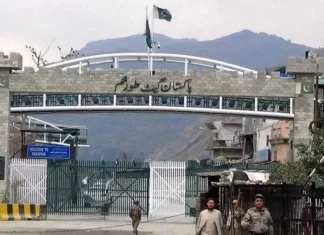Pakistan currently is in a stage of development where its economy is transitioning from a primarily agricultural base to that of value addition and services. Our biggest problem has been our willingness to simply sell our core products and allow others to use them to gain more profits from them, when we should have been investing in our own resources.
There are multiple national indicators that show an increase in incomes and aggregate demand, and a push towards rural to urban migration. In this context, the role of farmers and farmer groups is important in meeting the increased demand, while at the same time improving market linkages and input access for the local farming communities
In the past 60 years, the share of agriculture in Pakistan’s total GDP has decreased from ~43% in 1960 to almost 22% in 2019 (World Bank, 2019). However, despite the reduction in the GDP, the economic contribution of agriculture has increased, ~$1.6 billion in 1960 to $71.9 billion in 2019 (World Bank, 2019). Similarly, the proportion of the urban population in the country has been on an upward trajectory. The population in Pakistan has increased from 28.3% in 1981 to 36.38% in 2017 (Pakistan Bureau of Statistics, 2017). As a result, the average annual urban population growth over the past 20 years stands at 2.7%.
The agricultural labor force has been shifting towards the manufacturing and the services sector. The total population employed by agriculture has dropped from 44.81% in 1991 to 36.9% in 2019 (World Bank, 2019). This drop in the agricultural workforce has been well captured by the country’s services and manufacturing sectors with a current share of 38.6% and 24%, respectively.

Pakistan has also seen an increase in incomes as GDP per capita has increased from $83 in 1960 to $1482 in 2018 (World Bank). The rising incomes have led to an increase in higher value agricultural and processed goods and have contributed towards diet transformation in the country. Euromonitor reports an increase of over 150% in consumption of packaged foods in Pakistan over the past decade. To meet this increased demand, there needs to be a reform in the agriculture sector to ensure sufficient and suitable supply. One way to achieve this is through the farmer cooperatives and Farmer Producer Organizations (FPOs).
Agriculture sector growth and development remain critical for Pakistan’s economic growth. 68% of the farmers in the country own a farm size smaller than 2 hectares, and are classified as smallholders. Cooperatives and farmer groups provide these smallholder farmers the ability to pool resources, access credit, inputs and technology and obtain certifications. Since the bulk of farmers in Pakistan are smallholders, this model could prove to be an important linkage in empowering the rural populations, which predominantly comprise of people employed in the agriculture sector.
The declining proportion of agriculture in the country’s total GDP, rising rural to urban migration, greater employment in the manufacturing and services sector and a demographic transition with lower birth and death rates, referred to as structural transformation, are in line with theories of economic transformation. Despite this transformation, the role of the agriculture sector is still quite significant, and it still employs more than one third of Pakistan’s labor force.
Considering such a situation, the agricultural sector in the country needs to undergo certain reforms to cater for the changes that are associated with structural transformation. Farmer organizations and cooperatives can help benefit the agriculture sector through better market linkages, access to credit and technical assistance for smallholder farmers, access to improved technology and input application. With an agriculture sector characterized with an increasing productivity per worker over time combined with a trend of rural to urban migration, farmer cooperatives could play a vital role in regulating farmer produce and ensuring quality standards that could help them tap profitable markets.
Farmer cooperatives play an essential role in reforming the agriculture sector in several places such as India, Mexico, China and certain countries in Latin America and East Africa. There has been a renewed push for farmer organizations across the developed world since the 1990s, which has been stimulated by modernization and globalization of trade.
In certain countries where coffee is a significant export, such as Mexico, Ethiopia, Kenya and Guatemala, and there are stringent certification requirements, farmer cooperatives have helped smallholder farmers get access to international certifications through splitting the costs. These costs would be too high if a smallholder farmer applied for certification on their own.
In Pakistan’s case, textiles constitute the largest export of the country and often face tough competition in the international markets with regards to certification and quality control. Recently, there have been initiatives to promote organic cotton in the country, but this has happened through external stakeholders such as the World Wildlife Fund -Pakistan and apparel maker C&A Foundation (Ecotextile, 2017). Organic cotton demand is on the rise across the globe, with organic cotton being the largest non-food organic commodity in the United States. In the United States alone, the sales of organic cotton stood at $1.1 billion, up 18% since 2013 (Tong et al., 2018).
Farmer cooperatives can play an active role in obtaining organic cotton certification for smallholder farmers who wish to undertake organic cotton cultivation. Organic cotton presents a great potential for Pakistani cotton growers to diversify their market portfolio. Currently, Pakistan grows only 0.17% of the global organic cotton compared to 51% grown in neighboring India.
Farmer cooperatives also improve market linkages and reduce transaction costs. With commercialization, the transaction costs have increased for smallholder farmers as there are stricter quality standards. These high transaction costs deter the entry of small farmers into the domestic and international markets . Farmer cooperatives can reduce transaction costs for small farmers by making agricultural and market information more widely available, giving farmers greater negotiating power, and reducing the monitoring and enforcement costs. The cooperatives allow the farmers to directly access the markets and get rid of the middlemen who often charge exorbitant fees and keep a wide margin. This is especially beneficial in the context of Pakistan, where small farmers face significant transaction costs.
In certain countries like Honduras, farmer cooperatives are used to promote and market new crops like Rambutan Kano et al., 2013). In other countries like Malawi, farmer associations have lobbied for lower taxation from the government on smallholder agricultural produce (Shiferaw et al., 2011). Studies in India show incomes for citrus fruit (Malta) farmers triple when they became part of a cooperative in the state of Uttarakhand (Choudhary et al., 2015). In Tanzania, vegetable growers who were part of a farmer group were able to slash their transportation costs three times compared to farmers who were not (Aku et al., 2018).Cooperatives in Taiwan have helped smallholder farmers to procure food certification that fetches 20% more price than non-certified produce.
While farmers around the developing world are organizing themselves in cooperatives and farmer producer organizations to take advantage of the changing market linkages and international trade dynamics, Pakistan still lags in this regard. Farmer cooperatives have so far failed to take off in the country, with not a single cooperative that stands out nationally (Sandeela, 2019). Historically, there has been almost no presence of farmer cooperatives in Pakistan, and the government did not play any active role to promote them in its early years. In some of the countries where farmer cooperatives are prevalent, the government has played an active role in promoting cooperatives through legislation and policy, but in the case of Pakistan, there has been little effort made by the government to educate farmers about the cooperative model and its effectiveness. Smallholder farmers need education and knowledge regarding capacity-building to organize themselves effectively in the form of cooperatives. However, such initiatives have not taken any concrete shape due to bureaucratic delays.
Despite being tested on a tiny scale, the cooperative model has successfully achieved its objectives. In a study conducted in Punjab, cash crop farmers who were part of a cooperative witnessed an increase in the yield and had a 38% higher benefit-cost ratio than non-cooperative farmers (Sabir et al., 2012). Similarly, a farming cooperative setup in Khairpur in Sindh saw farmers adopt modern techniques for growing vegetables and fruits. Cooperative also linked the farmers with vegetable exporters and supermarkets in Karachi and Lahore, thus helping their sales (Sandeela, 2012).
Since Pakistan is undergoing a structural transformation, it requires an agricultural policy that increases market efficiency, farmer access to credit and technology, decreases transaction costs, increases bargaining power, and empowers smallholder farmers. There is also a need for information streamlining and awareness generation about effective farming techniques. It is only achievable through the introduction of farmer cooperatives and farmer producer organizations. To compete internationally, Pakistan needs to eliminate market inefficiencies and adopt the cooperative model in its agricultural sector.























